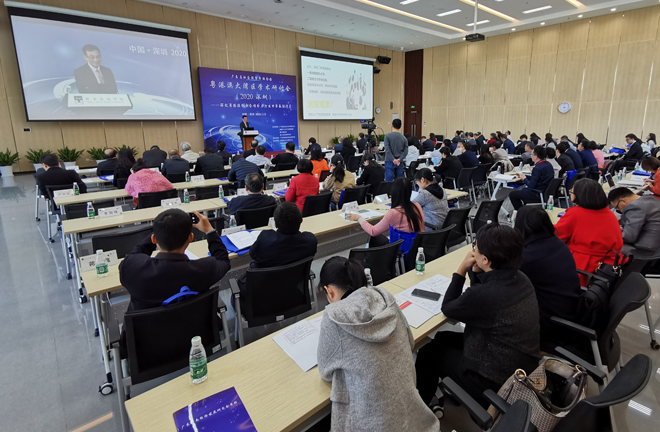Innovation key to building GBA into world-class bay area

The recent symposium held in Shenzhen Photo: WU YONG/CSST
SHENZHEN—The year 2020 will prove crucial in the implementation of two national strategies: the construction of the Guangdong-Hong Kong-Macao Greater Bay Area and the Shenzhen pilot demonstration area of socialism with Chinese characteristics.
A symposium themed on deepening innovative cooperation in building the Greater Bay Area and making it an international first-class bay area was held in Shenzhen, Guangdong Province.
Jiao Lei, an associate research fellow from the Institute of Higher Education at the South China University of Technology, said that the building of a highly integrated higher education community in the Greater Bay Area will help to build the area into a world-class center of science and technology innovation. A gap remains between the quality of the universities and colleges within the bay area. Therefore, the higher education institutions should work as an alliance to raise the overall strength of the community.
Shenzhen is among the most competitive cities in the world, said Chen Chi, counselor of the People’s Government of Guangdong Province. However, Chen pointed out, there are not enough high-quality universities and colleges in Shenzhen, which is the city’s weakest link and as such must be strengthened. Shenzhen needs to gather speed as it prepares to set up high-quality institutions of higher learning and improve their innovation capability.
The coordinated development of the maritime economy in the Greater Bay Area is also of vital importance. Xiang Xiaomei, vice president of the Guangdong Academy of Social Sciences, said that an innovation alliance featuring industry-university-research cooperation in the maritime economy of the Greater Bay Area should be established. Meanwhile, an innovation corridor of marine science and technology, a series of marine value innovation parks, and distinctive maritime industry clusters should also be built in the bay area in order to create a national-level center of scientific and technological innovation.
Xiang proposed the establishment of an innovation demonstration zone for the marine-related management system. The innovation zone should not only suit the development of China’s marine economy, but also abide by international maritime conventions. She suggested that the free trade area and the bonded zone should play their parts. Meanwhile, policies in Shenzhen’s shipping center regarding customs clearance, foreign exchange administration and tax revenue should also be improved.
Zhang Renshou, a professor of the School of Economics and Statistics at Guangzhou University, said that as a pacesetter in the building of the Greater Bay Area, Guangdong Province should join hands with Hong Kong and Macao to deepen cooperation in multiple fields including health care.
The key cities in the bay area should play a leading role, and infrastructure planning should be enhanced, said Mao Yanhua, a professor at the Institute of Guangdong, Hong Kong and Macao Development Studies at Sun Yat-sen University.
Wang Peng, deputy director of the Economic Research Institute of the Special Economic Zones at Jinan University said that if Guangdong, Hong Kong and Macao want to form a strong city cluster, all cities in the bay area should be allocated clear roles, functions and responsibilities. Meanwhile, cities should be able to complement each other’s advantages, and different measures should be taken to deal with different cities.
edited by NIU XIAOQIAN
